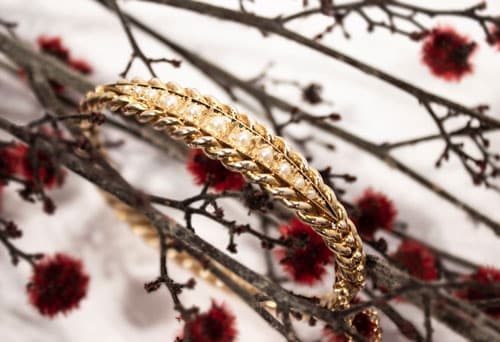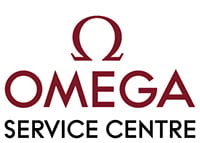
Here in this article we will look at the advantages of buying an antique ring, including an antique engagement ring that will be on your finger every day.
Firstly, let's look at the main method of making rings today compared to rings made over 100 years ago.
Like many things in our lives today, mass production has resulted in many rings being made in larger quantities, far quicker and ultimately cheaper than comparable items that have not been mass produced and/or hand made. Jewellery, including rings is certainly no exception to this.
To mass produce rings, casting is the main approach to this method, where a wax model of a ring is made and can be replicated countless times. It is then connected to a "tree" that may have more than 50 of the same wax ring attached. A mould is made and then placed in a kiln, with molten gold/platinum injected, resulting in a near instantaneous made ring.
After removing from the "tree" the ring is cleaned up, polished and if need be a gemstone or gemstones set into the ring.
The advantage of this method is the little time in which it takes to create a ring from start to finish, which of course has a knock-on effect of massively reducing the labour costs involved and a cast made ring can be identically replicated countless times, however the biggest disadvantages is from a strength and finish point of view, as cast rings have a characteristic "flaw" in the casting method resulting in porosity within the metal.
Although technology has resulted in a higher grade of casting, any cast item will still have porosity to some extent, as the gold, silver or platinum used will contain air bubbles trapped in the metal from the casting process. This means that the strength of the ring is far less than that of one which has been hand made. The surface strength or hardness of the metal will also be compromised and if a cast platinum ring were compared to a handmade platinum ring for example, the cast ring will collect marks and bumps much sooner than the platinum ring. In other words, the platinum ring will last longer, because the metal has been rolled and hammered during the hand making process, rather than being injected into a mould.
Like sword making over the centuries, that is heated and forged, the same goes with hand making a ring, as the metal is heated and hammered removing any of the air bubbles. This is the main reason why you can have an antique Victorian era ring from the 1850's still in good condition and a 20 year old cast made ring that has snapped in two.
There are of course rings that are still hand made today and there is nothing at all wrong with buying a cast made ring, however when you look at a genuine antique ring that has been made over 100 years ago, it is amazing to consider how all of the detail and craftsmanship was involved in creating a very special one-of-a-kind ring.
It isn't uncommon for an antique ring to need repairs after a century or so of wear, and the advantage of a handmade antique ring is that due to the hand making, they can easily be repaired whereas cast made rings often throw up a myriad of problems. It is so important that any work carried out on antique rings and jewellery is done by a jeweller that is highly experienced in repairing antique pieces. A jeweller experienced in antiques will be familiar with all of the older methods of making and will carry out any repairs true to the original character and integrity of the piece. Yes, Kalmar Antiques offer a full jewellery repair service and have highly skilled jewellers to handle the intricate antique pieces, as well as your more modern valuables.
White gold is also very popular and has been so since the early 1900's when it started seeing use in jewellery manufacture, however white gold is alloyed (mixed) with other metals to create the carat (such as 18ct gold) and the colour of pure gold from nature is very yellow.
Most white gold that is being produced is given a coating of rhodium plating, after being made, to give it a very white, mirror like finish. This looks superb; however the white gold being produced today often can have a soft yellow tinge, unnoticeable until after a few years of wearing.
White gold historically was alloyed with palladium, which is very closely related to platinum. Palladium is grey/white and platinum is a purer white colour. Today, not all white gold has high palladium content and different recipes are being used resulting in a lesser white colour. Often, the first time the consumer will see the true colour of their white gold, is when the rhodium plating has worn off the surface. Not always a good surprise!
Many people often wonder why the white gold ring they are wearing has a soft yellow colour coming through; when they thought they were getting white gold.
Don't misunderstand. The soft yellow colour coming through is still considered white gold, it's just that the white gold of years gone past is a much purer white than the white gold of today.
Then there is the issue today of "blood diamonds" and cheap labour forces in countries such as India and China that manufacture rings very inexpensively. This is a major issue that does not involve antique rings and jewellery. Cheap labour often includes child labour and blood diamonds can result in so many unknown situations arising.
What it really comes down to is quality and craftsmanship, created from a time when a jeweller was proud to put their name to a piece of jewellery.
Factor in the unique attributes of a genuine antique ring, which has so much charm and character, making it so appealing to many. Antique engagement rings are just one area of antiques that can still be enjoyed on a daily basis. Don't forget, you are holding a piece of history in your hands!






